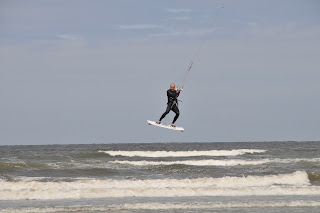 | ||||||||||||||||||||||||||||||||||||||||||||
| Portuguese Man O' War found at Marloes recently |
Exploring our coast can always bring exciting finds and some findings can be reported that help scientists in their research, and as a result we gain a further understanding of our seashores.
The Portuguese Man O' War found near Marloes in Pembrokeshire, was identified by a ranger. And if your not sure what you have found then a free jellyfish identification guide can be downloaded at www.mcsuk.org and other books and guides on rock pool identification can be found at many National Trust shops. |
The best part of the beach to find these critters is on the strand line or rock pools at low tide. These are fabulous places to forrage for shoreline creatures. Some common species include sand eel, hermit crab, starfish and shrimp. Check out Barafundle Bay, Broadhaven South and Freshwater West to name but a few in Pembrokeshire.
 |
| Starfish |
 |
| Strandline Beetles live among debris at Castlemartin |
Lots of seaweed can also be found more commonly along the strand line, this is often the tide line mark. Ever wondered why seaweed is slimy? Well it saves it from drying out and it also stops other plants growing on it. Many invertebrates shelter here including flies, spider and beetles such as the scarce Strandline beetle.
The Strandline beetle said to be found at Castlemartin just up from Freshwater West (Access to MOD Castlemartin range is restricted so walks across the range are by guide only and advertised locally).
The Strandline beetle said to be found at Castlemartin just up from Freshwater West (Access to MOD Castlemartin range is restricted so walks across the range are by guide only and advertised locally).
Tides and waves have a substantial effect on coastlines. So what is a tide?
Tides are the result of a relationship between the moon, sun and earth. Water on Earth bulges, and the sun and moon influence the water bulge as rotation occurs. (It’s a bit like if you put water in a bowl and imagine the sun's action that of one hand on one side of the bowl and the moon's action the other hand at the other side as the bowl is tipped and rotated)
Spring and Neaps are the names given to the highest and lowest high tides and generally occur two days after a new or full moon. The Spring tide is the highest and happens when the sun, moon and earth are in line. The Neap, the lowest high tide, happens when looking up from earth we see that the sun and the moon are about 90 degrees apart.
Averaging tides happen in the times between. In most places high tides follow low tides on a roughly six-hour cycle (two high and two low tides per day) and Spring and Neaps alternate on a seven-day cycle.
 |
| Wind surfer |
For those seriously involved with waves, like surfers, checking swell and wind beforehand aids in choice of location, and this might make the difference between a great day or taking a rain check.
What are waves?
 |
| Freshwater West surf |
It’s always a good idea to check on the tides before going for a coastal walk, because getting caught by an unexpected tide, might, at the least, create a rather annoying delay while waiting for it to go out, but the worst is… get caught short and it might also be life-threatening.
- Any interesting coastal finds please post and share your images on the NT Welsh Coast – YG Arfordir Cymru facebook page.






